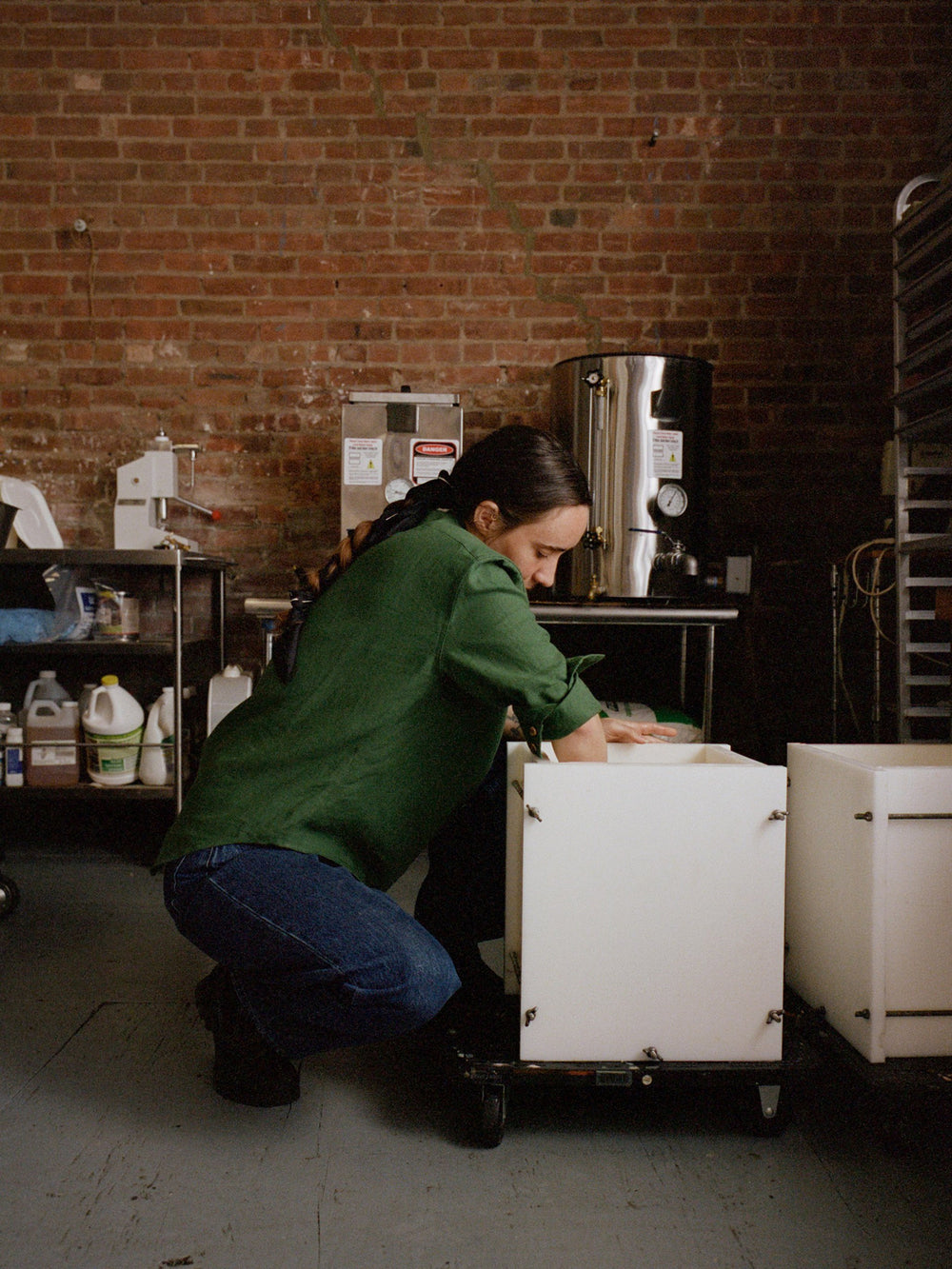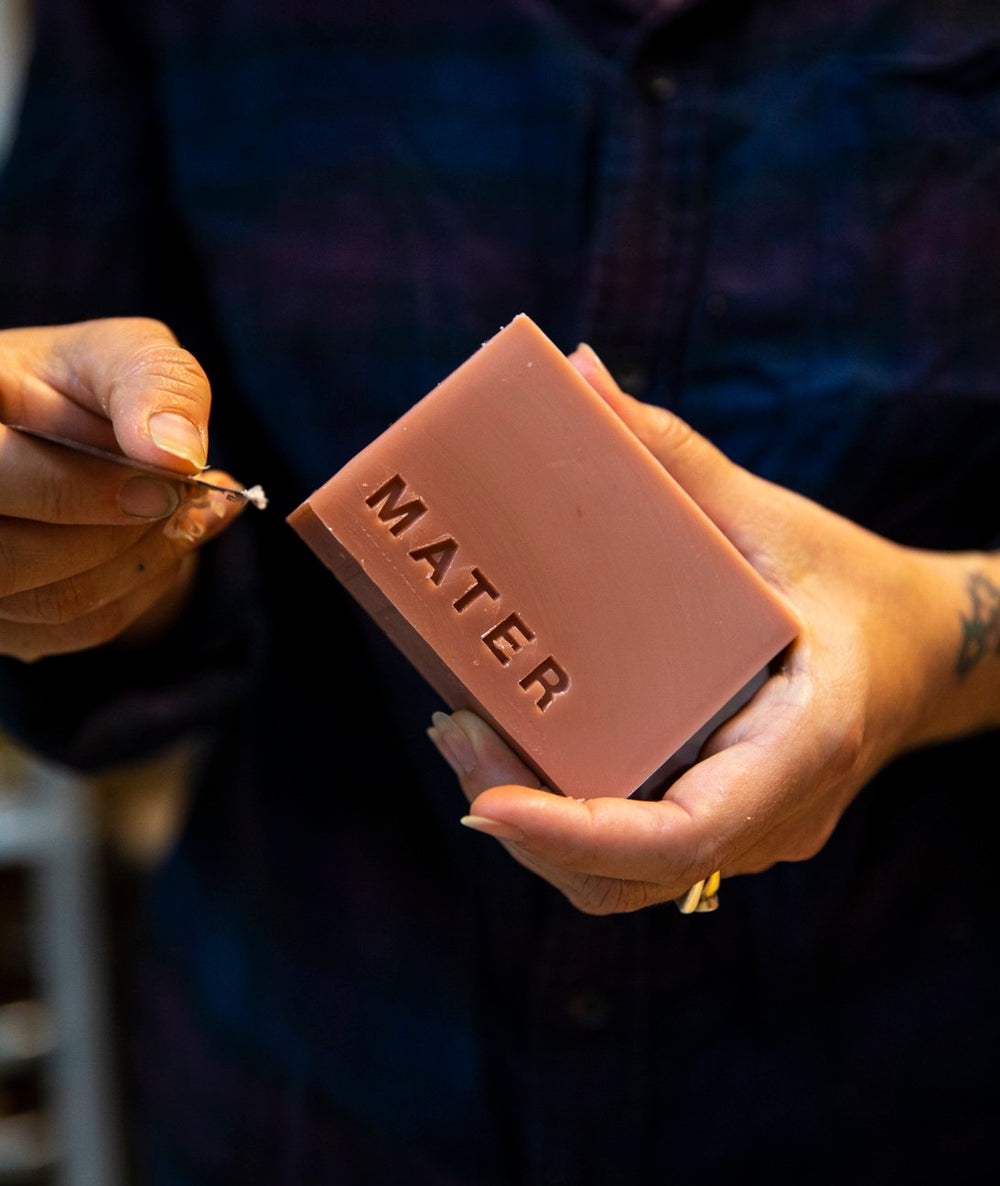About
MATER spoken like water
MA•TER \ˈmȯ-tər, ˈmä-tər
Mater Soap pays homage to utilitarian objects that quietly serve our daily lives. We create a variety of cold-process bar soaps and organic body products. Keeping our batches small and handmade, we strive to perfect the simple and subtle alchemy of soap-making and body care.
The minimalist beauty of traditional soap formulation and the power of plant oils and extracts inform our craft. By using natural, sustainably-sourced plant ingredients like smoky pine tar, red alkanet root powder, and salty sea plants, we provide bathers with products that nourish the body and the mind, and enhance the bathing ritual.
Take your time. Breathe deeply. Don’t rush, even with the dishes.
We are inspired by sculpture, architecture, and textiles— the meeting of joyful experience and simple, absolute function. Mater Soap chooses materials and composes recipes that speak to the well-being of both the bather and the planet, with products that are enriched by ingredients chosen with intention, care, and a conscious effort to minimize ecological impact.
Mater means “mother” in Latin. Mater Soap is named to honor the natural world from which we create. It is a nod of gratitude to the actual and symbolic mothers who nurtured us, broadened our concepts of beauty and empowerment, and showed us how to steward/cultivate in return. Mater bathers see themselves and nurture their bodies and spirits. They cultivate the beauty within on their quest to simplify. In a world of heedless excess, they care for, rather than waste.

Founder notes
I spent my formative years in Rome, where I was raised to appreciate quality and simplicity in food, art, and ritual. My background in sculpture, textiles, and natural dyes inform the Mater aesthetic and ethos.
After washing with a 5-lb block of crude tallow soap on a farm in the Bolivian Amazon, I started making soap in my weaving studio in NYC. Mater was born out of a dedication to process, material exploration and the objects that quietly serve us. I love thinking about soap as an inert shape—so stoic and essential—that, on contact with a body, becomes this activated and jubilant object.
Mater seeks to make significant experiences out of the mundane acts of daily life.
Based in Brooklyn, NY, Mater works with makers, artists, and other like-minded businesses toward the shared goal of less waste and more joy—and reverence in bathing and washing.
Enhance your ritual.

Woman of Willendorf
The Woman of Willendorf is one of the earliest artifacts representing the human body. Who is the author of this mysterious, precious small stone figure? What is her purpose? One theory of her provenance is that she represents the earliest portrait of a woman made by herself, based on the birds-eye-view shape of the figure’s body, lack of facial features and tiny feet —a self-portrait. The more common belief is that she is a “fertility figure, a good-luck totem, a mother goddess symbol, or an aphrodisiac made by men for the appreciation of men” (Kathleen Kuiper, Encyclopedia Britannica). She speaks to the redefinition of traditional concepts of beauty and empowerment, reclaiming personal body narratives. She sees herself.
The Woman of Willendorf is a 4"-tall Paleolithic sculpture, created around 30,000 BP. It is believed to have been carved in oolitic limestone, most likely in northern Italy. Also known as the Venus of Willendorf, it is in the collection of the Vienna Museum of Natural History.

